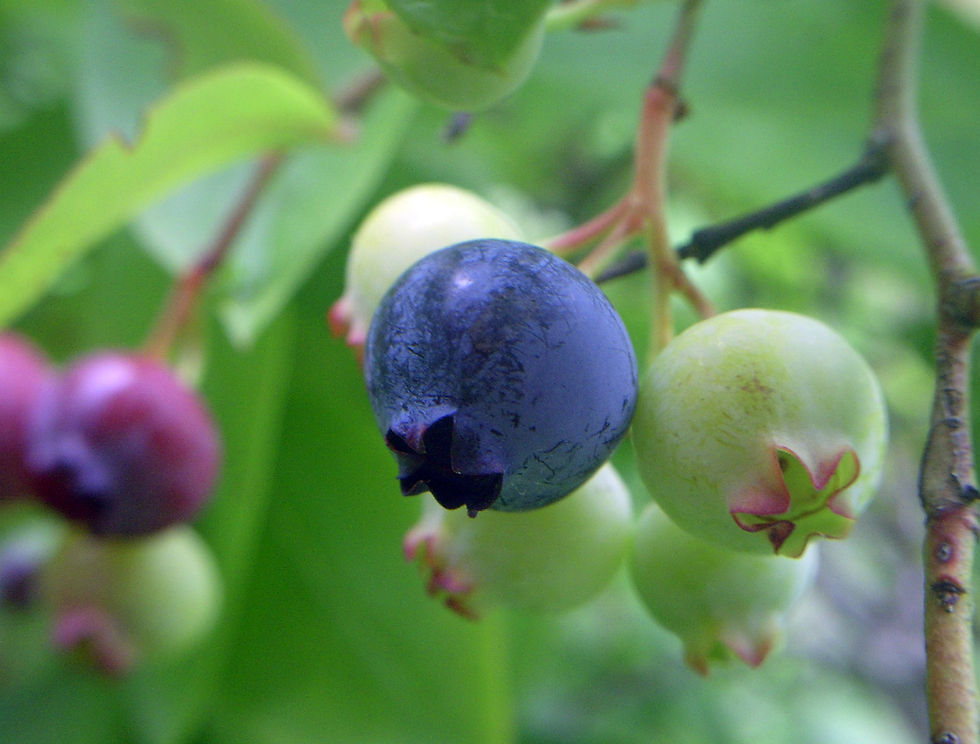Eastern Hemlock: Glimmers of Hope
- Jennifer Anderson

- Oct 23, 2023
- 4 min read

I got a call recently from someone looking to create a hedge in an area of deep shade – no more than 1 to 2 hours a day of sunlight.
Wow, that’s dark! But deep-shade-loving native trees and shrubs are out there, and for a hedge, we quickly arrived at one of the most beautiful and shade tolerant of all the conifers, Eastern Hemlock, Tsuga canadensis.
Eastern hemlock is a pine-family evergreen with soft, flat needles, lovely drooping branches and tiny cones–you can fit three or four in the palm of your hand–impressive for a 40- to 70-foot tall giant.

Eastern Hemlock also does well, and often better, in part shade and even full sun. It responds to pruning and makes a great hedge, although it also makes a beautiful specimen tree as long as it has space for its sometimes 30-foot girth.
In the wild, hemlocks often are found along dark, damp, north facing slopes and ravines. They have notoriously shallow root systems and grow well in poor, wet, rocky soils. Once established, though, hemlocks adapt well to drier soils.
They’re also old trees, living 800 years or more, and sometimes growing for 250 to 300 years before reaching maturity. Fewer and fewer hemlocks, however, are aging well because of a pest from Asia that came on the scene in 1924.

Hemlock Woolly Adelgid, Adelges tsugae, was relatively obscure until the 1980s, when it spread rapidly throughout much of the trees’ native range, along the Appalachians from Georgia to Maine and beyond into the New York Adirondacks, parts of Michigan and Wisconsin and up into Canada.
The adelgid, similar to an aphid, settles itself on the needles at the ends of the branches, covering itself with a white wax that looks like balls of wool along the ends of the branches and nourishing itself by sucking the sap out of the tree, preventing the tree from sprouting new growth. These little, white balls secreted by the adelgid are the best way to identify the pest.
The pests never leave the tree, with females laying eggs, larvae settling on the tips, and adults overwintering on the tree. These teeny pests can bring down even the tallest hemlocks within five years.

If you love hemlocks and have the space to grow one, don’t let the adelgid stop you. Solitary trees or even small groves of hemlocks are less likely to become infected than trees in the forests. Inexpensive chemical treatments also can be applied to the base of the tree should an infection take hold.
A note of caution: These chemicals are among a class of pesticides known as neonicotinoids, which are deadly to pollinators. At Tree Talk Natives, we do not use neonicotinoids, and in the hemlock forests, chemical pesticides are considered short-term solutions and stop-gap measures.
Among other concerns, explains Colin Orion, a biology professor at Tufts University, there is a native spider mite that also attacks hemlocks and actually thrives in the presence of neonicotinoids.
Biological control studies are underway, and these include research into two species of silver flies native to the Pacific Northwest. These flies prey on woolly adelgid as do three beetles that have been released in the Eastern United States hemlock forests. Research also is ongoing on predators from Asia.

Glimmers of hope:
Elongate Hemlock Scale is another invasive pest that also lives on the Hemlock’s needles. This scale does not kill the trees, and where it has taken hold, woolly adelgid is less predominant. “With scale, you see new growth [on the Hemlocks],” says Orion, in the video, Eastern Hemlocks: Two Pests are Better Than One.
About 8,000 to 12,000 years ago another pest was attacking hemlocks, explains Ryan Davis, senior forests projects manager for the Alliance for the Chesapeake Bay. Since the trees survived that “genetic bottleneck,” he said, there is reason to hope they will get past this pest as well.

Fun Fact ☺ (Courtesy of Ryan Davis): As the story goes, Socrates was sentenced to death by drinking tea brewed from the leaves of a poisonous, European, bi-annual weed known as hemlock. The Eastern Hemlock tree was named after that plant because, back in the day, people believed the places a tree grew reflected its inherent character. Since Eastern Hemlock grows naturally in wet, shallow, rocky soils, they reasoned the tree must have poor moral character.
For more on Hemlocks and Hemlock Woolly Adelgid visit the Hemlock Restoration Initiative at https://savehemlocksnc.org/info-for-landowners/
Sources:
Childs, R., Zoe Robinson and Tawny Simisky, Hemlock Woolly Adelgid.
University of Massachusetts Amherst Center for Agriculture, Food and the Environment. December 2022. https://ag.umass.edu/landscape/fact-sheets/hemlock-woolly-adelgid
Davis, R. Tree Talk: Eastern Hemlock. https://www.youtube.com/watch?v=Fmf7gkx8I2o
Earle, Christopher J. (ed.). “Tsuga canadensis,” The Gymnosperm Database, 2023. https://www.conifers.org/pi/Tsuga_canadensis.php
Godman, R. M. and Kenneth Lancaster, Eastern Hemlock. USDA. https://www.srs.fs.usda.gov/pubs/misc/ag_654/volume_1/tsuga/canadensis.htm
Hemlock Restoration Initiative. A joint program of the North Carolina Department of Agriculture & Consumer Services and the USDA-FS Forest Health Protectionhttps://savehemlocksnc.org/info-for-landowners/
Hemlock Woolly Adelgid, New York State Department of Environmental Conservation https://www.youtube.com/watch?v=5A96r5V_VOc
Orians, C. Eastern Hemlocks: Two Pests Are Better Than One. https://www.youtube.com/watch?v=Q_CNJ6uKRu0
Tsuga canadensis – eastern hemlock. Native Plant Trust Go Botany. https://gobotany.nativeplanttrust.org/species/tsuga/canadensis/





Comments